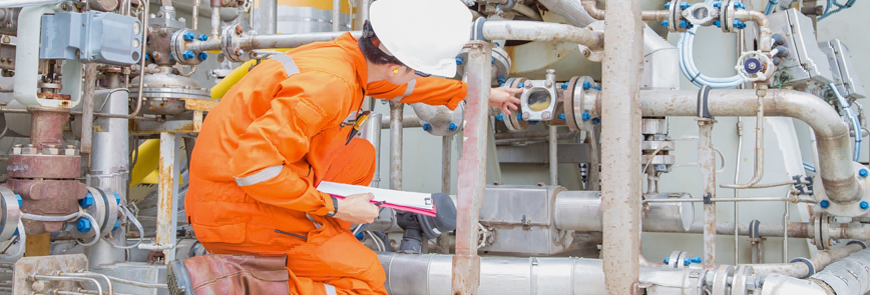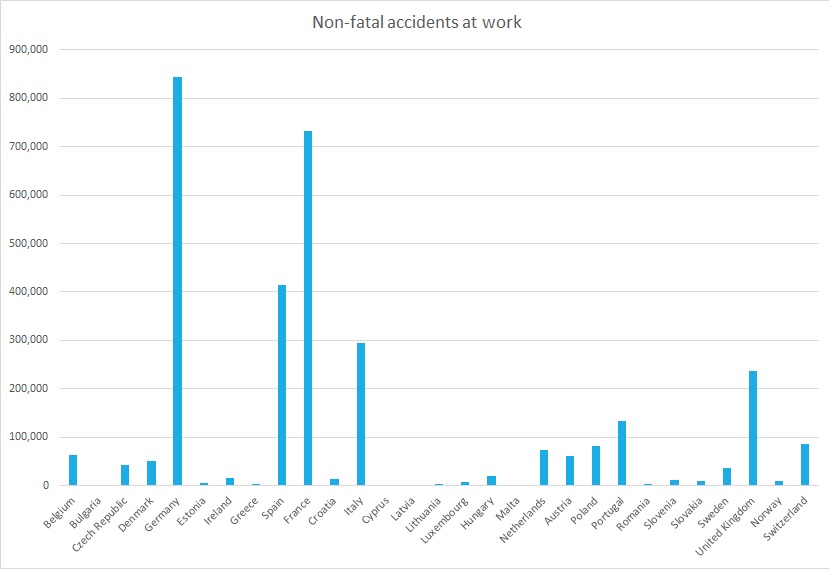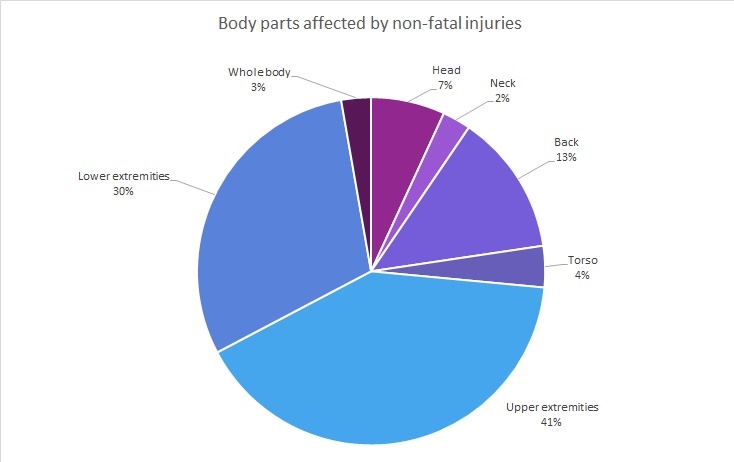
Ultimate Guide to
Safety in the Workplace
ERIKS’ overall safety philosophy starts with awareness, a safe environment and A-branded personal protective equipment and tools. What makes ERIKS different? Our unique combination of a broad and deep assortment, supporting services and a global network of know-how and experience. ERIKS removes the burden of finding 'piecemeal' safety solutions for your business, offering you a total approach to all areas of safety.
Employees are your organisation's most valuable asset and their health and safety should be a top priority, as reducing workplace
accidents and establishing a safer environment contributes to better productivity, employee satisfaction and confidence. For your
organisation, this means not only healthier and more content employees, but also less money spent on health insurance benefits and
reduced business costs in the long run.
The purpose of this guide is to raise awareness of the most common injuries occurring in the workplace and to support your
organisation in implementing efficient workplace safety procedures for reducing accidents to zero and ensuring that your employees
return home safely.
The guide is structured in individual chapters dedicated to head protection, hand and
arm protection, safety footwear, fall protection equipment and spill control. Each of these chapters details the legislation
and regulations that apply to the different groups of personal protection equipment, explains the main types of safety products
in that group and offers recommendations for choosing the most suitable equipment for your employees.
Workplace injuries in the EU
In the European Union, the number of accidents at work
involving at least 4 calendar days of absence from work was 3.169.887 in 2015, according to statistics from Eurostat,
the statistical office of the European Union. In all countries, men were more affected by women.
Although the number was much lower in The Netherlands compared to other countries, there were still 72.829 reported accidents in the
workplace. In Germany there were no less than 844.541 reported workplace accidents, these numbers being much higher than in
other EU countries.
In France, there were 731.120 work-related accidents, while in the UK, the number of reported workplace
accidents was 237.008 in 2015. For Belgium, the number of reported workplace accidents in 2015 was 63.863, lower than in other
countries. Finally, in the Switzerland, the number of reported workplace accidents was 85.655.

The industry sectors with the highest number of non-fatal accidents were: manufacturing, wholesale and retail trade, human
health and social work activities, construction, transportation and storage, administrative and support service activities, public
administration and defence, agriculture, forestry and fishing, accommodation and food service activities.
On the other hand, the industry sectors with the highest numbers of fatal accidents were construction, transportation and
storage, manufacturing, agriculture, forestry and fishing, wholesale and retail trade, administrative and support service
activities.
If we look at the most common types of injuries, we see that wounds and superficial injuries account for 30.0% of all
work-related injuries, followed by dislocations, sprains and strains (27.2%), concussions and internal injuries (17.2%) and bone
fractures (11.5%).
In what concerns the body parts
most affected by non-fatal injuries, we see that:
Head injuries account for 210.089 work-related accidents
There were 80.636 injuries of the neck, spine and vertebra in the neck
There were 402.102 non-fatal injuries of the back, including the spine and vertebra in the back
Torso injuries account for 117.334 non-fatal workplace accidents
Upper extremities account for 1.247.714 non-fatal workplace injuries, almost 1/3 of all non-fatal accidents
Lower extremities account for 916.162 non-fatal accidents
There were 84.515 accidents affecting the whole body

These numbers show that the arms and hands are the most injured body parts, representing almost one third of all non-fatal
workplace injuries. It is therefore of foremost importance for employers to ensure a safe work environment for their employees,
and to take all the needed measures for minimizing workplace accidents.
For countries in the EU, the Directive 89/391/EEC – OSH “Framework Directive” sets minimum health and safety requirements
throughout Europe with the aim to create safer workplace. According to this Directive, employers are obliged to:
Take all the measures necessary for the safety and health
protection of workers, including prevention of occupational risks and provision of information and training, as well as provision
of the necessary organization and means.
Implement measures for avoiding risks and evaluating risks
that cannot be avoided.
Adapt the work to the individual, especially as regards the
design of workplaces, the choice of work equipment and the choice of working and production methods.
Take measures for the safety, hygiene and health of workers,
which should not involve the workers financially.
Although hazards may happen in any workplace and it’s impossible for an employer to avoid them completely, an
organisation can take preventive measures for reducing the risks of injuries and for protecting its employees in the best
way possible. This includes creating a barrier between the employee and the working environment via personal
protection equipment (PPE).
The experience, dependability and know-how of ERIKS can support you in building a culture of safety and in maximizing
productivity and employee confidence.
Thus, if you need help in creating and implementing an effective safety program
for your organisation, don't hesitate to contact us. Our specialists will start from the ground and
work with you to address all areas of your organisation's safety needs.


